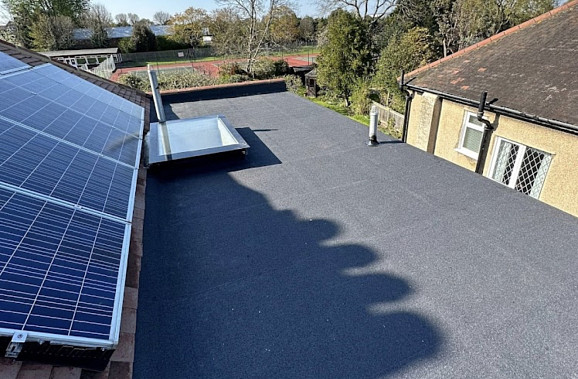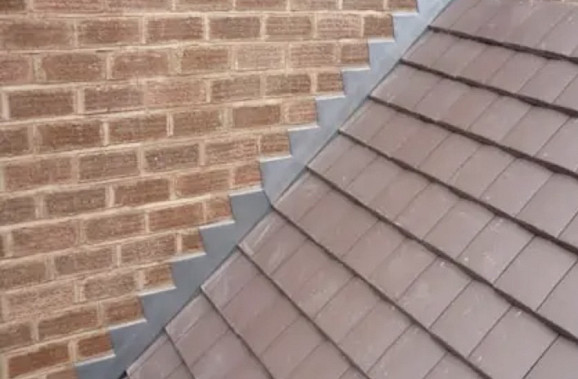Pitched Roofing Repairs and Installation
Pitched roofing, a prevalent architectural feature throughout London, offers a proven solution for weather protection and aesthetic enhancement of properties. Characterised by their sloping design, these roofs efficiently facilitate water run-off, a crucial factor considering London's rainy climate. In addition to their functional benefits, pitched roofs contribute significantly to a property's external appearance, often being designed with materials such as slate or tile that blend seamlessly with West London's architectural heritage. This introduction will delve into the intricacies of pitched roofing, its advantages, and its role in shaping West London's distinctive skyline.
Benefits Of Pitched Roofing
Pitched roofing comes with an array of benefits that significantly outweigh their initial installation costs. Foremost amongst these advantages is their long lifespan. Due to the quality materials used, such as slate or tile, pitched roofs in West London can endure for many decades with minimal maintenance, offering excellent value for money over time. The sloped design is not just aesthetically pleasing, but it also ensures effective drainage, which is particularly crucial given the high rainfall levels in the region. This design considerably reduces the likelihood of water stagnation and resultant structural damage.
Moreover, pitched roofs provide excellent insulation, contributing to energy efficiency by maintaining a steady indoor temperature, which can be a boon during London's chilly winters. Lastly, the space under a pitched roof can be utilised as loft storage or even converted into additional living spaces, thereby enhancing the utilisation of property space in West London.
Pitched Roof Maintenance and Care
Proper maintenance and care are integral to prolonging the lifespan of a pitched roof and preserving its aesthetic appeal, especially in the climate of West London. Regular roof inspections are one of the key elements in pitched roof protection. These should ideally be carried out twice a year and after severe weather conditions, ensuring any damages or potential issues are promptly identified and addressed.
Routine cleaning is another essential aspect of roof maintenance, which helps in the removal of moss, algae, and other debris that can potentially cause water retention and damage. Special attention should also be given to the guttering system, which plays a pivotal role in ensuring successful drainage from the roof.
Materials like slate or tile require professional handling for repairs or replacements. Therefore, hiring experienced roofing contractors can ensure that the work is carried out to the highest standards, with minimal risk of injury or further damage. It's also worth considering the installation of protective elements such as flashing and underlayment, which can provide an additional barrier against water intrusion.
Lastly, insulating the roof can help in maintaining indoor temperature and reducing energy costs. However, it's critical to ensure proper ventilation to prevent condensation, which can lead to dampness and structural damage.
By following these steps, property owners in West London can ensure the longevity and efficiency of their pitched roofs, preserving the distinctive architectural heritage of the region.
Factors To Consider For A Pitched Roof
When contemplating the installation of a pitched roof on your property in West London, several key factors should be taken into consideration to ensure the most beneficial outcome.
Functionality: The primary purpose of a roof is to provide protection from weather elements. Therefore, one must consider how well the chosen design and materials will serve this function.
Drainage: Given West London's climate, the roof's drainage capabilities are vital. The slope of a pitched roof should facilitate efficient water run-off, preventing water stagnation and potential structural damage.
Budget: While a pitched roof may entail a greater initial investment compared to other roofing types, it's essential to consider the long-term value. Factors such as lifespan, maintenance costs, and potential energy savings can make a pitched roof an economically sound choice in the long run.
Energy Efficiency: The roof can play a significant role in a property's overall energy efficiency. Materials and insulation that help maintain a steady indoor temperature can contribute to lower energy bills, particularly during the colder months.
Materials: The choice of materials not only affects the roof's durability and maintenance requirements but also its aesthetic appeal. Materials like slate or tile are commonly used for pitched roofs in West London, aligning with the region's architectural heritage.
Aesthetics: Finally, the aesthetic appeal of the roof should not be overlooked. Given its prominence, a well-designed and carefully installed pitched roof can significantly enhance a property's external appearance, thereby contributing to West London's distinctive skyline.
Solar Panels: It's essential to consider factors such as roof orientation and shading. A south-facing roof is generally the most beneficial in the UK for solar panel installation.
Also, it's important to ensure that there are no significant sources of shade that could hinder sunlight absorption. In addition, the load-bearing capacity of the roof should be factored into the planning phase.
Are Pitched Roofs Expensive?
From a purely upfront cost perspective, pitched roofs may seem more expensive than their flat counterparts or other roofing alternatives. However, it's crucial to view these costs in the context of the roof's lifespan, durability, and value added to the property.
Pitched roofs, particularly those constructed with durable materials such as slate or tile, are renowned for their longevity. In the weather conditions of West London, a well-maintained pitched roof can last many decades, significantly longer than most other roofing types. This means that while the initial outlay may be greater, the cost spread over the roof's lifetime turns out to be a value-for-money proposition.
Additionally, the efficient drainage capabilities of pitched roofs reduce the risk of water-related damages, which can often lead to expensive repairs. The ability of pitched roofs to withstand the elements also means less frequent maintenance and repair costs over time.
Beyond the tangible cost benefits, pitched roofs offer excellent thermal efficiency, helping to retain heat during the colder months and thereby reducing energy bills. They also add significant aesthetic appeal to properties, potentially enhancing their market value.
Therefore, while pitched roofs may require a greater initial investment, they offer numerous long-term benefits that make them a cost-effective choice for property owners in West London. So, are pitched roofs expensive? Not when you consider their long life span, enduring quality, and the value they add to your property.




